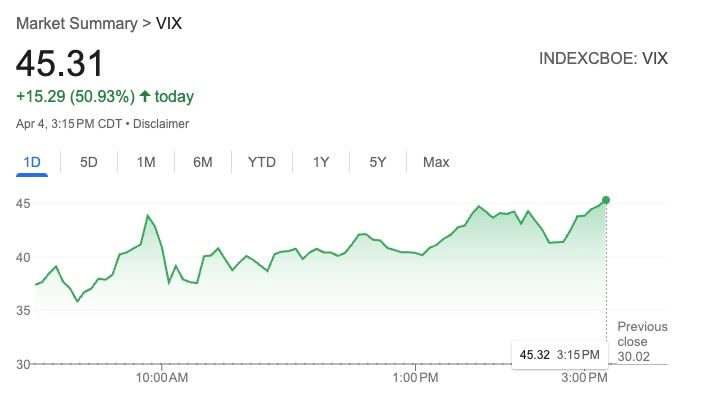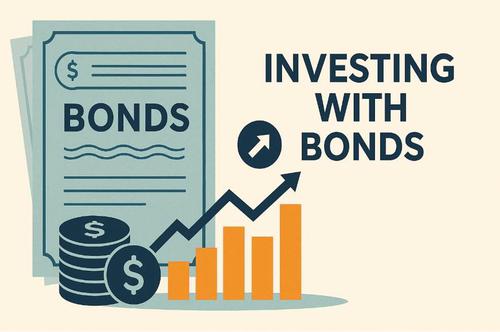Bitcoin Nears $61,000 After Fed’s Rate Cut: Exploring Crypto Market Impacts and Investment Opportunities
This report examines the recent surge in Bitcoin’s price following the Federal Reserve’s decision to cut interest rates by 50 basis points on September 18, 2024. It explores the broader implications of such monetary policy changes on the cryptocurrency market, particularly focusing on Bitcoin and other major cryptocurrencies like Ether. Additionally, the report evaluates the potential benefits of Federal Reserve rate cuts for the crypto market and identifies promising cryptocurrency ETFs that could provide investors with substantial exposure to this dynamic asset class.
Introduction
Impact of Fed Rate Cuts on Bitcoin and the Crypto Market
Historical Context and Immediate Reaction
Historically, Bitcoin and other cryptocurrencies have shown a tendency to react positively to monetary easing by central banks. The recent rate cut by the Federal Reserve is no exception. Following the announcement, Bitcoin’s price surged to approximately $61,000 before stabilizing around $60,000. This reaction can be attributed to several factors:
- Increased Liquidity: Lower interest rates generally lead to increased liquidity in the financial system. This makes it easier for investors to access capital, which can then be deployed into riskier assets like cryptocurrencies.
- Reduced Opportunity Cost: With lower yields on traditional fixed-income investments, the opportunity cost of holding non-yielding assets like Bitcoin decreases, making them more attractive to investors.
- Inflation Hedge: Rate cuts often lead to inflationary pressures. Bitcoin, often touted as “digital gold,” is seen as a hedge against inflation and fiat currency debasement.
Market Dynamics and Investor Sentiment
The broader cryptocurrency market also reacted positively to the Fed’s rate cut. Ether, the second-largest cryptocurrency by market capitalization, was reported above $2,300. Shares of crypto-related companies like Coinbase Global (COIN) and MicroStrategy (MSTR) saw increases of over 2% and 5%, respectively. This positive sentiment is indicative of the market’s expectation that lower interest rates will continue to support higher valuations for cryptocurrencies.
However, it’s important to note that the initial surge in Bitcoin’s price was followed by some stabilization, reflecting a cautious outlook among investors. Analysts predict that Bitcoin could experience 2%-3% price swings in the short term as the market digests the implications of the Fed’s decision.
Long-Term Implications of Fed Rate Cuts on Cryptocurrencies
Historical Performance and Future Projections
The long-term impact of Fed rate cuts on cryptocurrencies can be complex. While the immediate reaction is often positive, historical data suggests that the market can experience volatility before stabilizing. For instance, after the last rate cut in March 2020, Bitcoin initially dropped by 38.9% before embarking on a prolonged bull run.
Experts believe that the current rate cut could set the stage for a new bull cycle in the crypto market. The fourth quarter of the year has historically been bullish for Bitcoin, with an average price increase of 90% observed between October and December over the past decade. This historical trend, combined with the recent rate cut, suggests a significant chance for price gains as the year closes.
Macro-Economic Factors and Global Context
The Fed’s decision to cut rates is not just a response to domestic economic conditions but also reflects broader global economic instability. Sluggish growth in Europe, challenges in Japan and China, and rising unemployment in the U.S. all contribute to a complex macroeconomic environment. In this context, Bitcoin’s role as a hedge against economic mismanagement and fiat currency debasement becomes even more relevant.
Moreover, the introduction of exchange-traded funds (ETFs) has facilitated substantial capital inflow into Bitcoin, altering the asset’s fundamentals and attracting both institutional and retail investors. This trend has contributed to Bitcoin’s price increase and the overall market dynamics.
Cryptocurrency ETFs: Investment Opportunities
Overview of Top Cryptocurrency ETFs
For investors looking to gain exposure to the cryptocurrency market, ETFs offer a convenient and diversified investment vehicle. Here are some of the best cryptocurrency ETFs available in 2024:
- Fidelity Wise Origin Bitcoin Trust (FBTC)
- Assets Under Management (AUM): $11.9 billion
- Focus: Tracks Bitcoin performance
- Expense Ratio: 0.25%
- iShares Ethereum Trust ETF (ETHA)
- AUM: $594.9 million
- Focus: 100% invested in Ethereum
- Expense Ratio: 0.25% (reduced to 0.12% for the first $2.5 billion in assets starting July 23, 2024)
- Amplify Transformational Data Sharing ETF (BLOK)
- AUM: $632.9 million
- Focus: Companies involved in blockchain
- Expense Ratio: 0.76%
- First Trust Indxx Innovative Transaction & Process ETF (LEGR)
- AUM: $96.2 million
- Focus: Diversified exposure across over 100 stocks in crypto, tech, and banking
- Expense Ratio: 0.65%
- Siren Nasdaq NexGen Economy ETF (BLCN)
- AUM: $60.8 million
- Focus: Companies developing and using blockchain technology
- Expense Ratio: 0.68%
- Global X Blockchain & Bitcoin Strategy ETF (BITS)
- AUM: $21.7 million
- Focus: Half in Global X Blockchain ETF and half in Bitcoin futures
- Expense Ratio: 0.65%
- Bitwise 10 Crypto Index Fund (BITW)
- AUM: $857.0 million
- Focus: Top 10 cryptocurrencies by market cap, rebalanced monthly
- Expense Ratio: 2.5%
Newly Approved Spot Bitcoin ETFs
In addition to the above ETFs, the Securities and Exchange Commission (SEC) approved a total of 11 spot Bitcoin ETFs in 2024, with 10 starting to trade on January 11, 2024. These ETFs directly track the price of Bitcoin by holding the cryptocurrency itself. Here are the key details regarding their fees, ranked from lowest to highest:
- Franklin Templeton Digital Holdings Trust (EZBC) – 0.19%
- Bitwise Bitcoin ETF (BITB) – 0.20%
- VanEck Bitcoin Trust (HODL) – 0.20% (Fee waived until March 31, 2025, or first $1.5 billion in fund assets)
- Ark 21Shares Bitcoin ETF (ARKB) – 0.21%
- iShares Bitcoin Trust (IBIT) – 0.25% (Fees reduced to 0.12% until January 11, 2025, or the first $5 billion in fund assets)
- Fidelity Wise Origin Bitcoin Fund (FBTC) – 0.25%
- WisdomTree Bitcoin Fund (BTCW) – 0.25%
- Invesco Galaxy Bitcoin ETF (BTCO) – 0.25%
- Valkyrie Bitcoin Fund (BRRR) – 0.25%
- Hashdex Bitcoin ETF (DEFI) – 0.90%
- Grayscale Bitcoin Trust (GBTC) – 1.50%
These ETFs provide investors with direct exposure to Bitcoin, marking a significant development in cryptocurrency investment options. However, it is important to note that there is no guarantee that these ETFs will match the returns of Bitcoin itself.
Expert Opinions and Market Predictions
Diverse Perspectives on Rate Cuts and Crypto
Experts have varying opinions on the impact of Fed rate cuts on the cryptocurrency market. Alice Liu from CoinMarketCap suggests that a 0.25% cut may boost crypto markets, while a 0.5% cut could signal recession concerns, potentially leading to a short-term pullback in crypto assets. Conversely, Mario Altenburger from Harbour Industrial Capital believes a 0.5% cut would drive a short-term rally, anticipating further cuts in 2024.
Arthur Hayes, co-founder of BitMEX, cautions that the rate cut could lead to an immediate crash in speculative asset prices, especially if inflation remains a concern. He warns that such cuts may weaken the dollar, particularly against the Japanese yen, which could further destabilize markets.
Long-Term Bullish Trends
Despite the potential for short-term volatility, the long-term outlook for Bitcoin and other cryptocurrencies remains bullish. The fourth quarter historically shows bullish trends for Bitcoin, with a 90% price increase observed on average between October and December over the past decade. This historical trend, combined with the recent rate cut, suggests a significant chance for price gains as the year closes.
Additionally, the upcoming U.S. election may also influence Bitcoin’s price. Bernstein analysts predict a potential Bitcoin rise to $90,000 if former President Trump wins, while a loss could drop it to $30,000. This political factor adds another layer of complexity to the market dynamics.
Conclusion
The Federal Reserve’s decision to cut interest rates by 50 basis points on September 18, 2024, has had a significant impact on the cryptocurrency market, particularly Bitcoin. The immediate reaction saw Bitcoin’s price climb toward $61,000, reflecting increased liquidity, reduced opportunity costs, and its role as an inflation hedge. While the short-term outlook may involve some volatility, the long-term prospects for Bitcoin and other cryptocurrencies remain positive.
For investors looking to gain exposure to the cryptocurrency market, ETFs offer a convenient and diversified investment vehicle. The newly approved spot Bitcoin ETFs, along with other established cryptocurrency ETFs, provide various options for investors to consider.
In summary, the Fed’s rate cut has reinforced the long-term case for Bitcoin as a hedge against economic mismanagement and fiat currency debasement. As the market continues to evolve, investors should remain informed and consider diversified investment strategies to navigate the dynamic landscape of cryptocurrencies.


